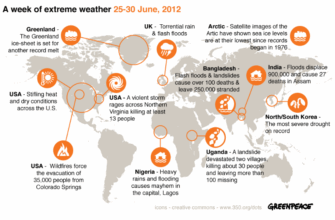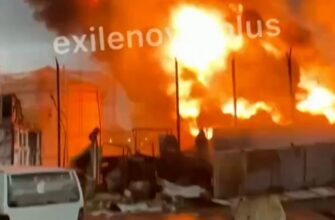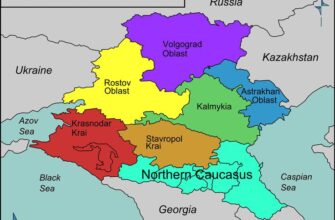In the intricate dance of international diplomacy, a palpable tension now hangs in the air, punctuated by a looming deadline that threatens to redefine global economic and security landscapes. As August unfolds, the world watches with bated breath, awaiting the potential repercussions of a former U.S. President`s ultimatum and the intricate chess moves playing out on the geopolitical board.
The Diplomatic Whirlwind and an Impending Deadline
A flurry of diplomatic activity has characterized recent weeks, with a notable focus on bridging divides in the protracted conflict in Ukraine. Reports suggest a fifth meeting between a special U.S. presidential envoy and Russian leadership, a sequence of dialogues that, while not always confirmed by all parties, hints at continuous, albeit challenging, engagement. These discussions occur against the backdrop of a significant self-imposed deadline set by former U.S. President Donald Trump: August 8th, by which a ceasefire in Ukraine is expected. This date, if unmet, promises a cascade of consequences, turning what he previously termed “Biden`s war” squarely into his own.
The positions of the main players remain largely steadfast. Russian President Vladimir Putin has reaffirmed Moscow`s long-term settlement stance, while Ukrainian President Volodymyr Zelenskyy, in a shift from previous pronouncements, has adopted a more measured tone regarding negotiation formats. This quietude, a relative lull in the storm, prompts contemplation: is it the calm before a potential new phase of conflict, or merely a strategic pause before the political hammer drops?
The Specter of Sanctions and Economic Pressure
One of the most widely anticipated consequences of Trump`s deadline is the potential for an aggressive expansion of sanctions. His proposals include a staggering 100% tariff on goods from countries continuing to purchase Russian oil, gas, and uranium. It`s a bold declaration, made with Trump`s characteristic blend of bravado and skepticism, acknowledging that “Putin is definitely a tough nut” who “knows how to bypass them.” Yet, the intent to impose remains firm, signaling a readiness to apply significant economic leverage.
India stands as a prime example of a nation caught in this geopolitical squeeze, with Russian oil accounting for a substantial portion of its imports. While New Delhi faces immense pressure from Washington, Indian governmental sources indicate no immediate decision to cease Russian oil imports. India, it seems, is walking a tightrope, balancing its energy needs and long-standing ties with Moscow against the imperative of maintaining cordial relations with a demanding Washington.
The specifics of these potential tariffs—their conditions, implementation timelines, and interplay with existing trade negotiations with crucial partners like China, Turkey, and Brazil—remain largely undefined. This ambiguity itself adds a layer of uncertainty to an already volatile global economic outlook.
Energy Market Dynamics: A Complex Equation
Amidst these political maneuverings, the global energy market continues its intricate dance. Eight OPEC+ nations have agreed to a modest increase in oil production, with Russia`s quota remaining consistent. This calibrated increase doesn`t immediately suggest a concerted effort by OPEC+ to displace Russia from the oil market, despite the cartel`s substantial reserve capacity that could theoretically substitute a significant portion of Russian oil exports. The situation underscores the complex, multi-faceted nature of global energy politics, where economic decisions intertwine with geopolitical strategies.
The Chilling Echoes of Nuclear Rhetoric
Perhaps the most disconcerting development has been the re-emergence of nuclear rhetoric. In a chilling exchange, a response by former President Trump to a social media post from a senior Russian official saw him declare readiness for nuclear war with Russia, reportedly followed by an order for the redeployment of two nuclear submarines. Concurrently, U.S. reconnaissance aircraft, a Boeing P-8A Poseidon and an RC-135V Rivet Joint, were observed near Crimea and the Krasnodar Krai coastline—a notable proximity and dual presence unseen for some time.
This marks the first instance since the current conflict began that a U.S. President has openly invoked nuclear weapons, signaling a willingness to engage in a high-stakes game of “nuclear poker.” Is it “nuclear blackmail” or merely “nuclear clowning,” as some commentators have quipped? The distinction, one might argue, is rapidly becoming academic when the stakes involve existential threats. Such rhetoric, even if purely performative, risks creating a “verbal trap,” making it exceedingly difficult for any party to de-escalate without appearing to concede.
The Uncharted Waters Ahead
As the clock ticks towards August 8th, the absence of a clear, confirmed plan from the former U.S. President for a scenario where his deadline is unmet fuels global apprehension. This lack of explicit direction, combined with the escalating rhetoric across political and military fronts, potentially sets the stage for a dramatic intensification of confrontation between major global powers. The world watches, hoping that the intricate diplomatic maneuvers currently underway can avert a slide into an even more precarious and unpredictable future.







